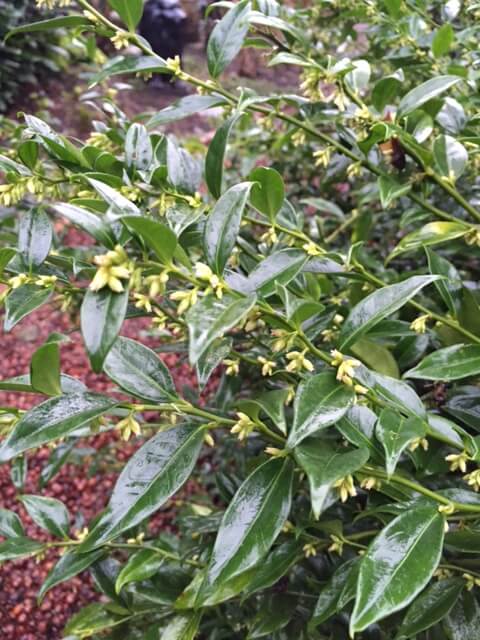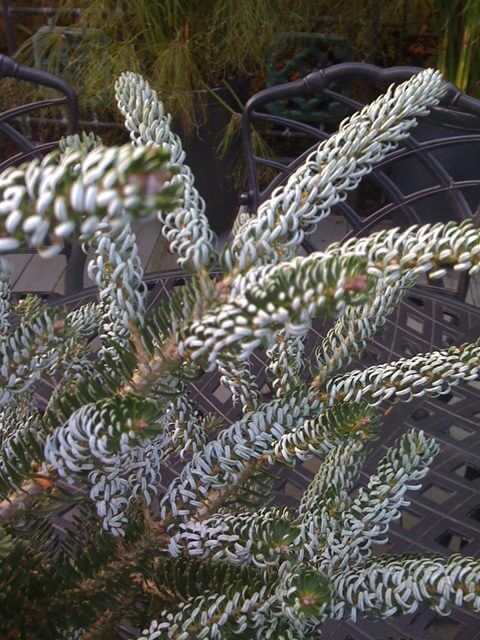
Fiery branches of gold, orange, and red rise from the winter garden, bringing color to the bleakest landscapes. There’s no better complement to evergreen and berried landscape shrubs than brilliant red twig dogwoods (Cornus sericea) and blood twig dogwoods (Cornus sanguinea). Their branches also look attractive in seasonal arrangements.
About Redosier Dogwoods
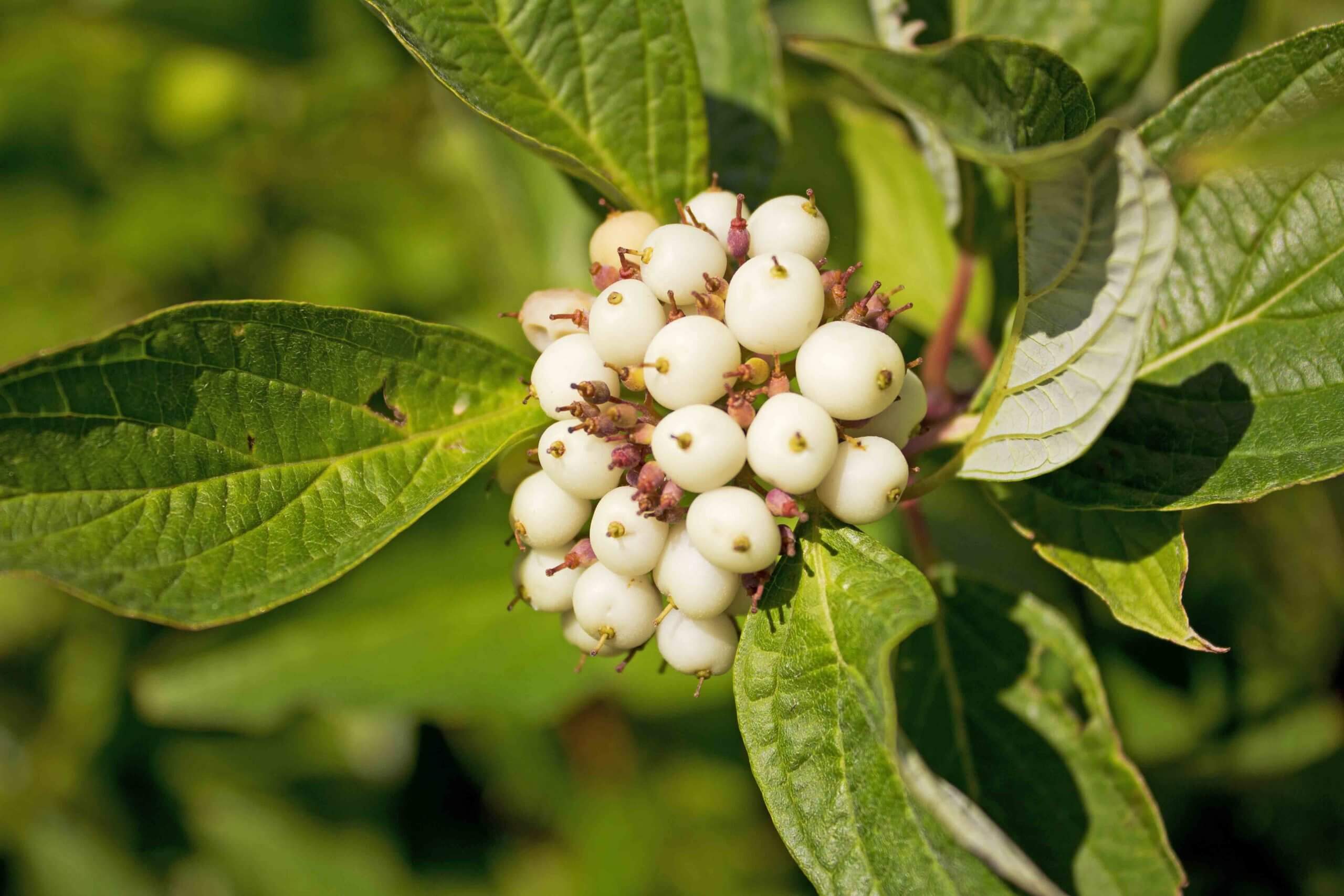
Native to much of North America, redosier dogwood is a remarkably hardy, densely branched shrub (6-12’), growing as far north as Alaska where it survives in USDA Hardiness Zones 2-9. It naturally grows in moist areas or watersides and can even withstand slightly salty soils. It may exist under the shaded canopy of trees or in open sunny areas. In spring, it produces flat-topped clusters of white flowers. These are followed by whitish, berry-like fruits that appear later in the season. The bright green leaves turn shades of wine red or maroon in fall. The younger twigs of wild plants naturally turn shades of red in winter.
The bloodtwig dogwood is just as pretty, but it is Eurasian, inhabiting forested regions and wetland margins from northern Europe to western Asia. It performs in the landscape much like redosier dogwood, but its late-season fruits are black rather than white.
Redosier Dogwoods and Wildlife
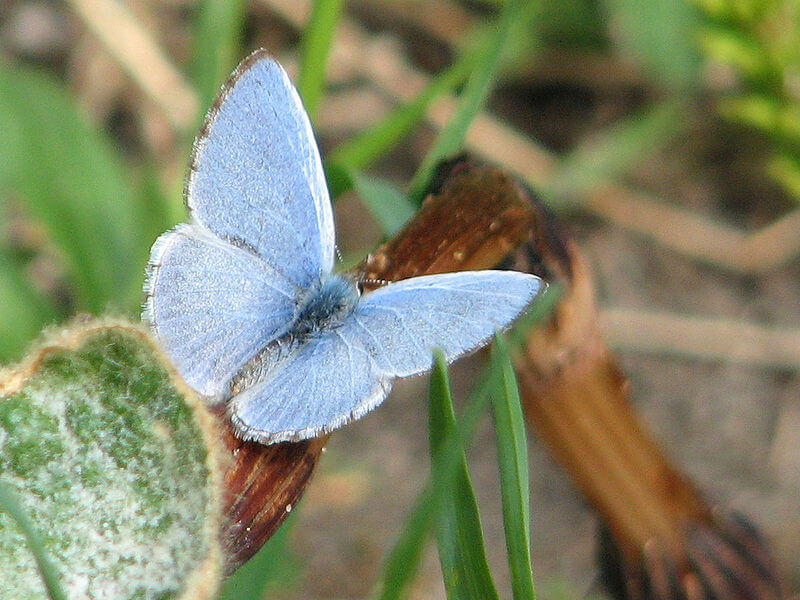
The redosier dogwood has a unique relationship with certain pollinators. The flowers are visited by bees and butterflies, but the foliage is also the larval host of the spring azure butterfly, a beautiful blue butterfly found across much of North America. The bloodtwig dogwood also serves as the larval host plant to the less desirable casebearer moth. Many birds feed on the fruits and rely on the dense branching of these shrubs for nesting and shelter.
Varieties
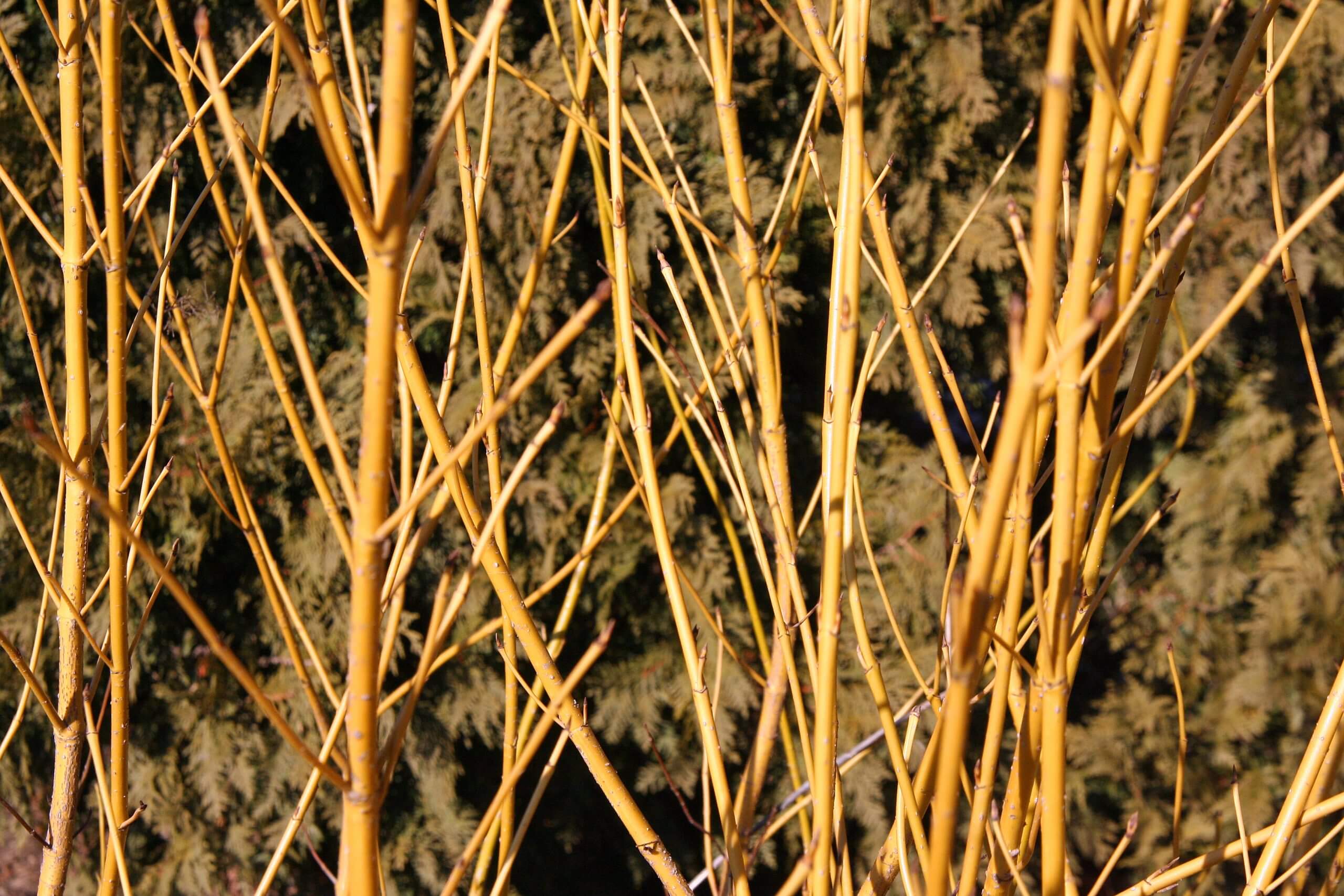
For brilliant twig color, few redosier dogwoods can beat the classic variety ‘Baileyi’. Its brilliant red branches glow in winter, and the dense shrubs reach up to 9’. A comparable cultivar is ‘Cardinal’, which offers good diseases resistance in addition to red twig color. The more compact redosier dogwood, Arctic Fire®, is a shorter form (6’) that has equally bright red stems. The equally compact bloodtwig dogwood, Arctic Sun®, has golden twigs tipped with orange and coral red, as does the slightly taller ‘Midwinter Fire’. The dwarf redosier dogwood ‘Kelseyi’ (3’) is the smallest of the red twig forms.
Yellow-twig forms are also striking. The best of these is ‘Flaviramea’ (8’), which develops bright yellow to greenish yellow twigs in winter. The pretty ‘Silver and Gold’ is a variant of ‘Flaviramea’ with attractive variegated leaves edged in silver, in addition to yellow twigs. Another variety with handsome variegated foliage is ‘Hedgerows Gold’, which has golden-edged leaves that line deep red branches.
Planting
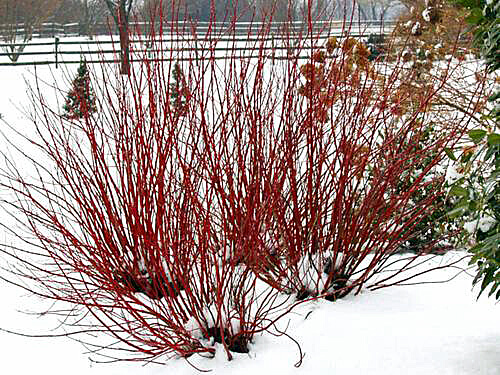
Twig color and growth is best when plants are planted in a sunny to partially sunny location. Choose a spot where the winter twigs will be most conspicuous—either an open area or against a darkly colored mass of evergreens or a substantial foundation. Mass plantings have the best winter effect and are great for stabilizing slopes or watersides.
Soil can be moist or well drained, but fertile soil with a pH of 5.0 to 7.5 is preferred. When planting a new shrub, dig a hole that is twice the size of the shrub’s root ball. Amend your backfill with Black Gold Garden Soil before planting, and set the shrub in the hole, making sure the root line and soil line are level. Fill in along the edges, and pack the soil down firmly to ensure good root-to-soil contact. Irrigate well after planting, and make sure newly planted shrubs stay well irrigated during the summer months.
Pruning and Maintenance

The best twig color comes from younger branches, so it is important to regularly prune redosier dogwood in later winter to early spring. Cut old, overgrown branches to about 1-2’ from the ground to keep shrub height in check and encourage new growth. Pruning cuts should be made at a 45-degree angle. It is important to dip pruners in a 10% bleach solution when pruning each new shrub to avoid any chance of spreading common diseases.
Diseases
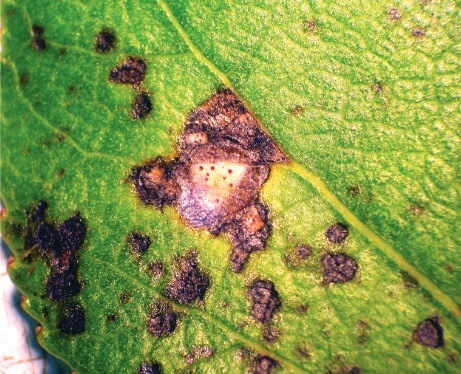
Dogwood stem canker (Botryosphaeria dothidea) is the most notorious disease of these shrubs. It is a fungal disease that causes cankers and branch death. The disease enters the plant via cuts and lesions, which is why it is important to keep pruning tools clean when making cuts. Plants that become stressed are most susceptible to the disease.
This canker is manageable. Remove diseased stems by cutting several inches below the point of infection. Do this in dry weather and clean pruners between cuts. Remove and destroy diseased branches. Irrigating shrubs during dry spells will reduce stress and help ward off the disease. Choosing canker-resistant varieties, such as ‘Cardinal’ is also useful.
Septoria leaf spot is another common disease that causes unsightly black spots and early leaf shed on the summer leaves of red osier dogwood. The lower leaves are the first to show spots. Several cultural steps can help to control Septoria leaf spot. First, thin overly dense branches to encourage airflow and reduce the chance of infection. The disease overwinters on infected leaf tissue, so remove all fallen leaves underneath the plant.
Redosier dogwood is a true landscape gem. Keep it well maintained, and it will reward you with bright warm color on cold winter days.



